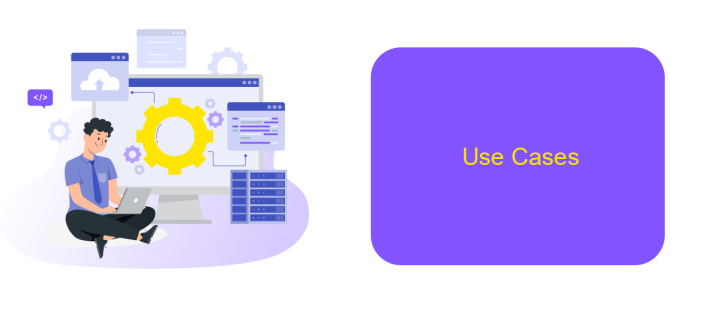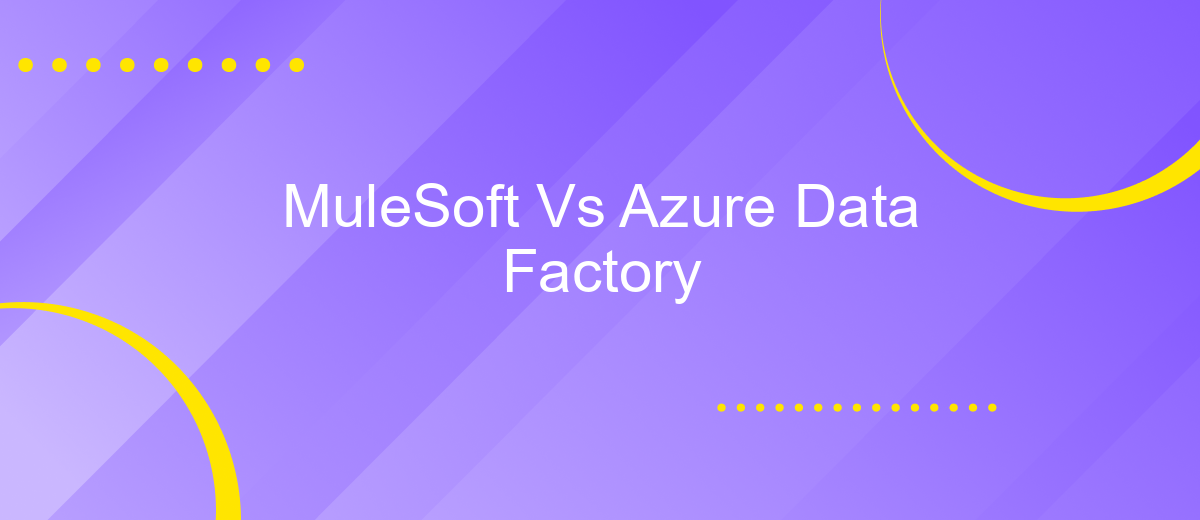MuleSoft Vs Azure Data Factory
When it comes to data integration and automation, choosing the right tool can significantly impact your business operations. MuleSoft and Azure Data Factory are two leading platforms offering robust solutions for these needs. This article will compare their features, capabilities, and ideal use cases to help you make an informed decision on which platform best suits your organizational requirements.
Introduction
In today's data-driven world, the ability to seamlessly integrate and manage data from various sources is crucial for businesses. Two prominent tools in this domain are MuleSoft and Azure Data Factory. Both platforms offer robust solutions for data integration, but they cater to different needs and use cases. Understanding the key features and differences between these tools can help organizations make informed decisions about which platform best suits their requirements.
- MuleSoft: Known for its API-led connectivity approach, MuleSoft excels in connecting applications, data, and devices with reusable APIs.
- Azure Data Factory: A cloud-based data integration service, Azure Data Factory is designed for orchestrating and automating data movement and transformation at scale.
- ApiX-Drive: A versatile service that simplifies the integration process, making it easier to connect various applications and automate workflows.
Choosing between MuleSoft and Azure Data Factory depends on several factors, including the complexity of integration requirements, the existing technology stack, and the specific goals of the organization. By exploring the strengths and capabilities of each platform, businesses can leverage the right tool to optimize their data integration processes and drive better outcomes.
Feature Comparison

When comparing MuleSoft and Azure Data Factory, it is essential to highlight their integration capabilities. MuleSoft is renowned for its Anypoint Platform, which offers a comprehensive suite for API management, design, and analytics. It provides a robust environment for creating and managing APIs, ensuring seamless integration across various systems. On the other hand, Azure Data Factory excels in data integration and ETL (Extract, Transform, Load) processes, providing a scalable cloud-based solution for data movement and transformation. Its integration with other Azure services makes it a powerful tool for data orchestration in the cloud.
Both platforms offer unique advantages depending on the specific needs of the organization. MuleSoft’s strength lies in its API-centric approach, which is ideal for businesses looking to streamline their API management and integration processes. Meanwhile, Azure Data Factory is more suited for organizations focused on data-driven workflows and cloud-based data integration. Additionally, services like ApiX-Drive can complement these platforms by offering no-code integration solutions, making it easier to connect various applications and automate workflows without extensive technical expertise.
Pricing

When comparing MuleSoft and Azure Data Factory, pricing is a critical factor to consider. Both platforms offer flexible pricing models to accommodate various business needs, but there are distinct differences in their approaches.
- MuleSoft: MuleSoft offers a subscription-based pricing model. The cost is determined by the number of users, the volume of data processed, and the specific features required. MuleSoft also offers different tiers, such as Gold, Platinum, and Titanium, each providing different levels of support and capabilities.
- Azure Data Factory: Azure Data Factory uses a pay-as-you-go pricing model. Charges are based on the number of Data Integration Units (DIUs) consumed, the volume of data moved, and the number of pipeline activities executed. This model allows for cost efficiency, especially for businesses with fluctuating workloads.
For businesses looking to streamline their integration processes, services like ApiX-Drive can offer additional support. ApiX-Drive provides an easy-to-use platform for setting up integrations without extensive technical knowledge, potentially reducing the overall cost and complexity of managing integrations. By leveraging such services, businesses can optimize their use of either MuleSoft or Azure Data Factory, ensuring they get the best value for their investment.
Use Cases

MuleSoft and Azure Data Factory are powerful tools for data integration and transformation, each offering unique advantages depending on the use case. MuleSoft excels in API-led connectivity, enabling seamless integration across a wide range of applications, data sources, and devices. Its robust API management capabilities make it ideal for organizations seeking to create a unified, scalable ecosystem.
Azure Data Factory, on the other hand, is a cloud-based data integration service that specializes in orchestrating and automating data movement and transformation. It is particularly well-suited for big data workflows and complex ETL (Extract, Transform, Load) processes, leveraging the power of Azure's cloud infrastructure.
- MuleSoft: Ideal for real-time data integration and API management.
- Azure Data Factory: Best for large-scale data processing and cloud-based ETL workflows.
- ApiX-Drive: Useful for automating integrations between various SaaS applications without coding.
Choosing between MuleSoft and Azure Data Factory often depends on specific business needs and technical requirements. For example, if your organization needs real-time data synchronization and extensive API management, MuleSoft is the better choice. Conversely, if you are dealing with large volumes of data that require complex transformations, Azure Data Factory is more suitable. Additionally, services like ApiX-Drive can complement either platform by providing easy-to-use integration solutions for various SaaS applications.
Conclusion
In comparing MuleSoft and Azure Data Factory, it's clear that both platforms offer robust solutions for data integration and management. MuleSoft excels in providing a comprehensive API-led approach, enabling seamless connectivity between various systems and applications. Its strength lies in the ability to handle complex integrations with ease, making it a preferred choice for enterprises with intricate IT landscapes.
On the other hand, Azure Data Factory stands out with its strong data orchestration capabilities within the Microsoft ecosystem. It is particularly effective for organizations heavily invested in Azure services, offering streamlined data workflows and seamless integration with other Azure tools. For businesses looking for a simpler, more user-friendly solution to set up integrations, services like ApiX-Drive can be invaluable. ApiX-Drive offers an intuitive interface and pre-built connectors, allowing users to automate data flows between different applications without extensive technical expertise. Ultimately, the choice between MuleSoft and Azure Data Factory will depend on the specific needs and existing infrastructure of the organization.


FAQ
What are the main differences between MuleSoft and Azure Data Factory?
Which platform is better suited for real-time data integration?
Can both MuleSoft and Azure Data Factory be used for ETL processes?
How do MuleSoft and Azure Data Factory handle automation and integration setup?
Which platform has better support for cloud-based data services?
Apix-Drive is a simple and efficient system connector that will help you automate routine tasks and optimize business processes. You can save time and money, direct these resources to more important purposes. Test ApiX-Drive and make sure that this tool will relieve your employees and after 5 minutes of settings your business will start working faster.

